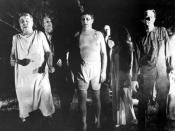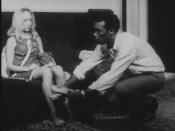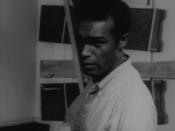According to John Carpenter, friend of Romero and noted horror director himself, "With Night of the Living Dead, George Romero brought a feel to horror films that had never been seen before"ÃÂ (Gagne, 21). This film not only established an aesthetic aspect of graphic horror and violence much imitated by countless directors, namely Wes Craven and David Cronenberg, it also established several viewpoints under which the works of these three directors could be viewed. Beginning with Night of the Living Dead, the films of Romero, Cronenberg, and Craven can be discussed in terms of being auteurist, industrial, generic, theoretical, and sociocultural.
The notion of the auteur arose during the 1950s in France. This theory states that when one person, usually the director, influences a film the most, the film can be categorized as auteurist and the director as an auteur. Night of the Living Dead is such an example because Romero wrote, directed, filmed, edited, and even briefly appeared in the film himself.
The film is industrial because like any business proposition, it was produced in the hopes of making a profit for the filmmakers. Especially in the case of Night of the Living Dead, staggering considerations were made in order to get the film released. This included battles with production companies, distribution houses, censors, critics, and ultimately, the audience. In fact, Romero and the rest of the investors at Image Ten decided on a exploitive horror film simply because it had the biggest potential to make money. According to Paul Gagne, "All Romero and his cohorts set out to do was make enough money to give them to financial independence they needed to make more Anthony Muzzatti- #2 features"ÃÂ (23).
The term generic categorizes the film into its perhaps basest and most obvious form, as a...


